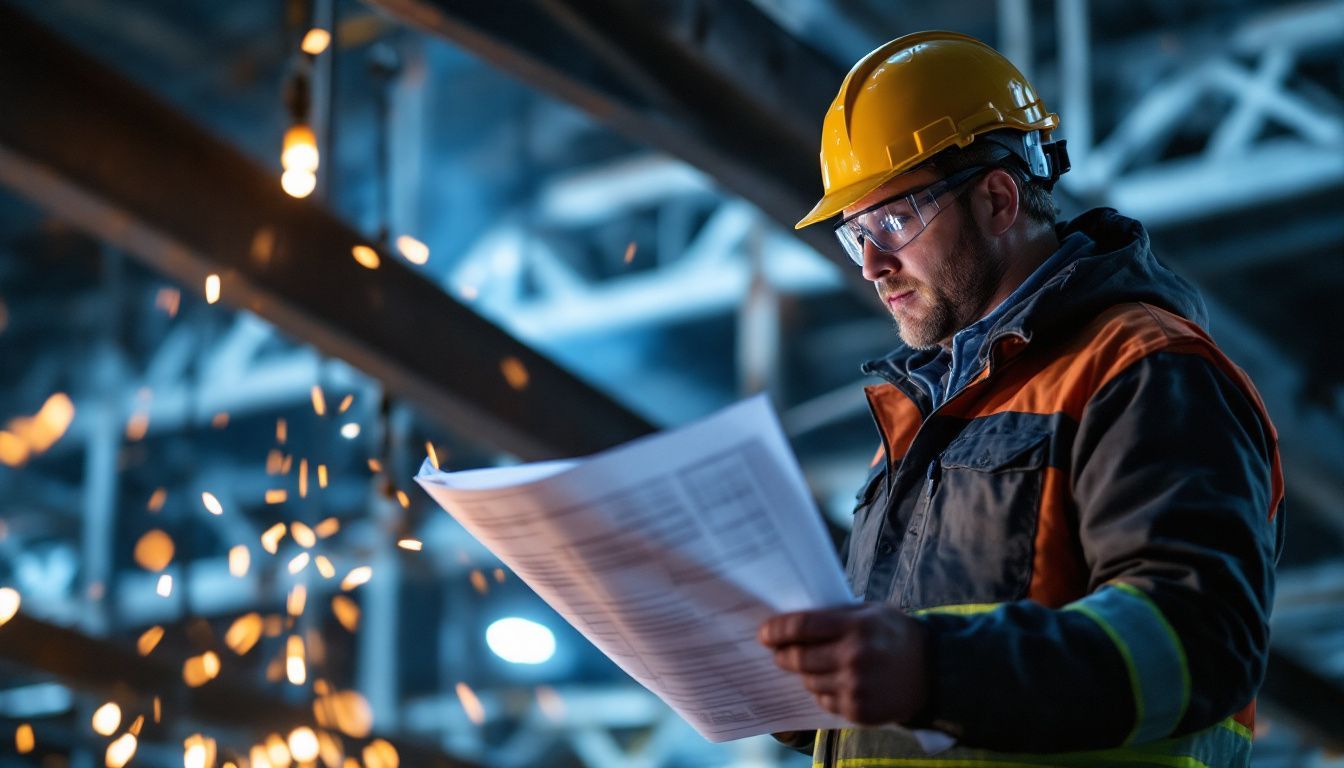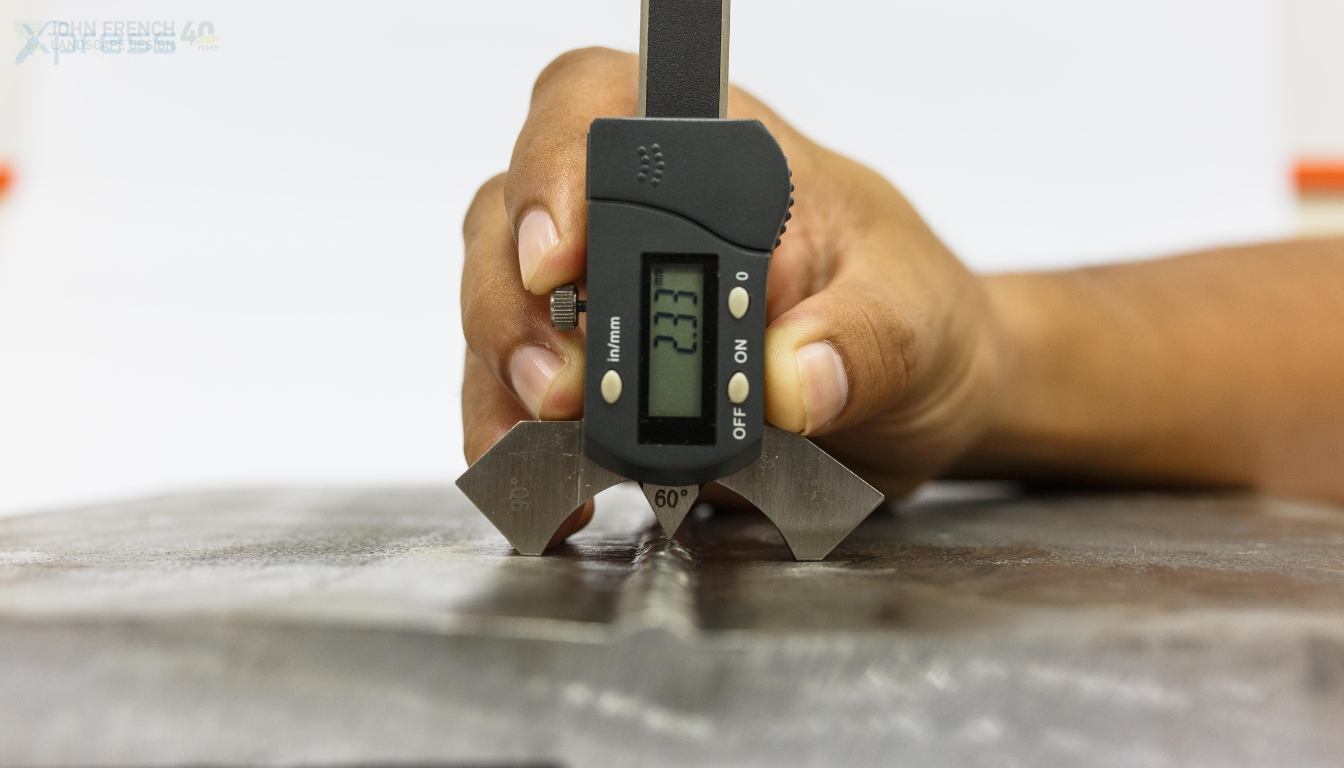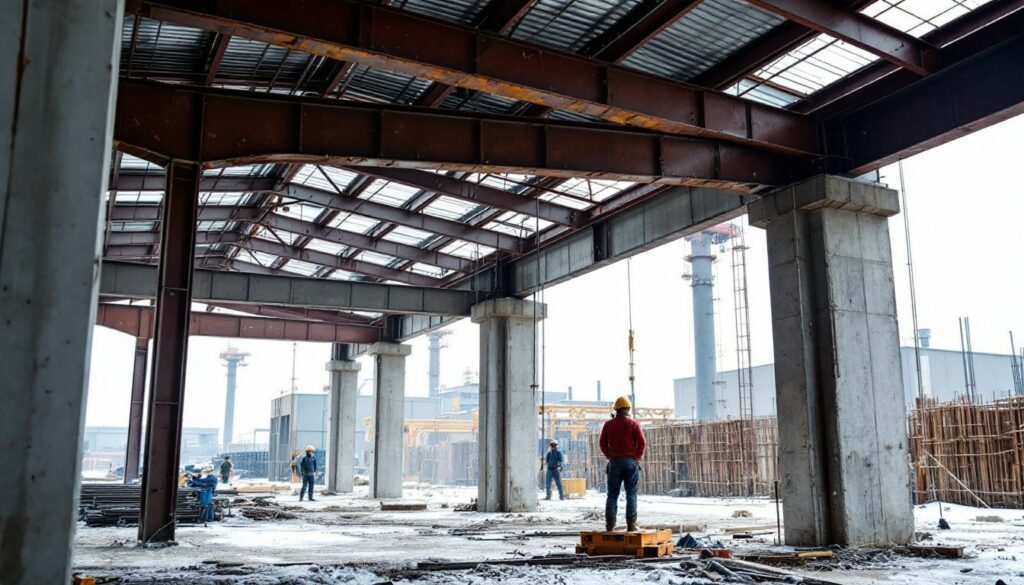Choosing the right building material can be tough for those seeking strength and durability. Structural steel makes up about half of the global steel used in construction. This article highlights the top benefits of using structural steel to help you make smart choices.
Discover why structural steel is a top choice today.
Key Takeaways
- Structural steel accounts for about 50% of global steel used in construction, offering a high strength-to-weight ratio that supports tall buildings and long spans.
- In 2021, the steel industry recycled 1.6 billion tons of scrap steel, making up 74% of total steel production and promoting sustainability.
- Steel is highly durable, resisting corrosion, rust, mold, and extreme temperatures, which ensures buildings last longer and require fewer repairs.
- Using structural steel can lower building costs, with prices around $900 per ton in Vietnam, and speeds up construction times, saving on labor expenses.
- Structural steel is versatile, available in many shapes like I-beams, hollow sections, and channels, allowing for unique and flexible building designs.
High Strength-to-Weight Ratio

Structural steel has a high strength-to-weight ratio, making it ideal for construction. It can carry heavy loads while remaining lightweight. Common grades like Carbon Steel and High-Strength Low-Alloy (HSLA) steel offer excellent yield and tensile strength, measured in psi and ksi.
Steel beams, including I-beams and wide flange beams, use this strength to build sturdy frameworks without adding excess weight. This efficiency allows for taller buildings and longer spans with fewer materials.
This ratio also enhances the versatility of structural steel shapes, such as columns and hollow sections. Engineers appreciate how specific strength of steel supports innovative designs and complex structures.
With about 50% of global steel consumption used for structural purposes, steel’s strength-to-weight ratio is a key factor in its widespread use. Next, explore how structural steel ensures buildings last longer through durability and longevity.
Durability and Longevity
Steel resists corrosion, rust, mold, flames, and extreme temperatures, making it a strong choice for lasting structures. The Charpy impact test ensures steel can absorb energy under various conditions.
Grades like A36 steel offer high strength with low carbon content, preventing brittleness. Proper fabrication and welding under ASTM standards boost durability. These properties ensure buildings and infrastructure built with structural steel stand the test of time.
Durable steel structures ensure safety and longevity in every construction project.
Versatility in Design
Structural steel offers a variety of shapes like angles, tubing, I-beams, wide flange beams, channels, and plates. These different structural shapes make it easy to create complex and unique building designs.
Architects can design buildings with large open spaces or intricate details that would be difficult with other materials.
Flexibility is another strength of structural steel. It allows for easy modifications and additions to existing structures. Builders can expand or change buildings without major disruptions.
This adaptability makes structural steel a top choice for projects that may need to grow or change over time.
Sustainability and Environmental Benefits
Steel is fully recyclable, making it a top choice for sustainable construction. In 2021, the steel industry recycled 1.6 billion tons of scrap steel, which accounted for 74% of total steel production.
Recycling reduces the need for raw materials like iron ore and coal, lowering the environmental impact. Sustainable production methods ensure that steel remains an eco-friendly construction material.
Using structural steel also supports environmental benefits. Durable steel structures last longer, decreasing waste from repairs and replacements. This longevity reduces the overall use of resources and energy in building projects.
Moreover, recycled steel can be reused in new constructions, promoting a circular economy. These sustainability features make steel a smart choice for green building, leading to further advantages in cost-effectiveness.
Cost-Effectiveness
Using structural steel can lower your building costs. The initial investment is low compared to other materials. Structural steel’s high strength means you need less material. This reduces the overall expense.
For example, in Vietnam, structural steel costs about $900 per ton. Choosing the right steel grade ensures you get the best value for your money.
Construction times also decrease with structural steel. Faster building means lower labor costs. Shorter timelines help projects stay on budget. Furthermore, less material waste saves money.
Structural sections can be easily fabricated to meet specific needs. This efficiency makes steel a cost-effective choice for many construction projects.
Supplementary Insights on Structural Steel
Learn about the various types, shapes, and standards of structural steel to see how it supports strong and lasting buildings.
Different Grades and Types of Structural Steel
Structural steel comes in various grades and types. Each type offers unique properties for construction needs.
- Low-Carbon (Mild) Steel: Contains between 0.04% and 0.3% carbon. It is easy to form and weld, making it ideal for building frames and commercial structures.
- Mid- to High-Carbon Steels: These steels have 0.31% to 1.5% carbon. They are stronger and harder, suitable for heavy-duty applications like bridges and high-rise buildings.
- High-Strength, Low-Alloy (HSLA) Steels: Include up to 2% manganese and small amounts of elements like molybdenum and chromium. HSLA steels offer higher strength and better resistance to corrosion, perfect for harsh environments.
- ASTM-Approved Grades: Common grades include ASTM A36, ASTM A500, ASTM A572, and ASTM A588. These grades meet standards set by ASTM International, ensuring reliability and safety in construction.
- Stainless Steel: Contains chromium, providing excellent resistance to rust and corrosion. It is used in areas exposed to moisture and chemical elements.
- Hollow Structural Sections (HSS): These steel shapes have a hollow cross-section, offering high strength with less weight. HSS are used in modern building designs for both aesthetic and structural benefits.
- Rebar Steel: Used to reinforce concrete structures. Rebar improves the tensile strength of concrete, making it essential for foundations and slabs.
Each grade and type of structural steel is designed to meet specific engineering requirements, ensuring the strength and durability of construction projects.
Common Structural Steel Shapes and Their Uses
Structural steel comes in various shapes, each serving a unique purpose in construction. Understanding these shapes helps in choosing the right steel product for your project.
- Angled Sections
- Use: Support beams and columns in buildings.
- Features: L-shaped cross-section. Easy to connect with other materials.
- Tubular Hollow Sections
- Use: Frames for bridges and towers.
- Features: Circular or rectangular hollow shapes. High strength and aesthetic appeal.
- Flat Sections
- Use: Flooring systems and cladding.
- Features: Flat steel pieces. Versatile for different installations.
- Parallel Flange Channels
- Use: Trusses and structural frameworks.
- Features: U-shaped cross-section with parallel flanges. Provides stability.
- Rectangular Hollow Sections
- Use: Columns and beams in buildings.
- Features: Box-like shape. Offers excellent load-bearing capacity.
- Square Hollow Sections
- Use: Support structures and piping.
- Features: Square cross-section. Easy to stack and align.
- Tapered Flange Beams
- Use: Long-span bridges and large buildings.
- Features: Flanges that decrease in size. Reduces weight while maintaining strength.
- Universal Beams
- Use: Main load-bearing elements in construction.
- Features: Wide flange and web. High ultimate tensile strength.
- Universal Columns
- Use: Vertical supports in frameworks.
- Features: Similar to universal beams but oriented vertically. Strong against compression.
- Merchant Bars
- Use: General construction and manufacturing.
- Features: Hot-rolled or cold-finished. Available in various carbon levels.
Each steel shape offers specific advantages, making structural steel a versatile choice for building construction. Selecting the right shape ensures strength, durability, and efficiency in your construction projects.
Importance of Quality and Compliance in Fabrication
Building on the different shapes of structural steel, quality and compliance are essential in fabrication. Following ASTM’s over 12,000 standards ensures steel products meet precise grades and material tolerances.
Infra-Metals Co., a top structural steel provider in the U.S., strictly adheres to these regulations. High-quality fabrication ensures the chemical composition and mechanical properties of steel are consistent.
This reliability strengthens steel frames and maintains structural integrity in construction projects.

Importance of Welding Inspection in Structural Steel Construction
Welding inspection ensures strong joints in structural steel. Inspectors check that welds meet the required structural steel grades and building codes. The Charpy impact test measures a weld’s energy absorption, even in cold temperatures.
Quality control during welding helps prevent corrosion, rust, and damage from heat. Structural engineers rely on these inspections to verify yield strength and maintain the steel’s durability.
Proper welding inspection reduces the risk of stress fractures and ensures the longevity of steel buildings.
Applications of Structural Steel in Construction
Structural steel is used in many types of construction. It supports strong and lasting structures worldwide.
- Buildings: Structural steel forms the main framework of commercial and industrial buildings. Beams and columns made of steel provide the necessary strength and flexibility for tall structures.
- Bridges: Steel beams and cables are essential in bridge construction. They handle heavy loads and resist stress from traffic and weather conditions, ensuring safe passage over rivers and roads.
- Warehouses: Large open spaces in warehouses are made possible with steel frames. This allows for efficient storage and easy movement of goods without many internal supports.
- Stadiums: Steel supports the expansive roofs and seating areas of stadiums. Its high strength-to-weight ratio allows for wide spans and clear sightlines for spectators.
- Industrial Plants: Heavy machinery in factories needs strong support. Structural steel frames provide the durability and stability required for industrial operations.
- Prefabricated Steel Buildings: Companies like Pebsteel use structural steel to build sections off-site. These parts are then assembled quickly on-site, saving time and reducing construction costs.
- Towers: Communication and observation towers rely on structural steel for height and stability. Steel’s ductility helps towers withstand wind and seismic forces effectively.
- Energy Infrastructure: Structural steel is used in wind turbines and power plants. Its ability to handle high stresses makes it ideal for supporting renewable energy systems.
Conclusion
Steel stands out as a popular choice in construction for many benefits. It offers great strength without being heavy, making buildings stable. Durable and long-lasting, steel resists wear and tear.
Flexible designs are possible with steel, allowing unique structures. Opting for steel leads to strong and sustainable buildings.
FAQs
1. Why is structural steel stronger than other building materials?
Structural steel has a high strength of materials, offering a higher strength to weight ratio compared to wood and other materials. It can withstand more stress and compression, measured in pounds per square inch, making it ideal for main load-bearing beams in construction.
2. How does structural steel help buildings withstand earthquakes?
Structural steel provides excellent resistance properties that help buildings endure earthquake forces. Its structural strength and flexibility allow it to absorb and dissipate energy, reducing damage during seismic events and ensuring the safety of the structure.
3. Is structural steel environmentally friendly?
Yes, structural steel is environmentally friendly. It is made from recycled steel and can be reused without losing its properties. Steelmaking processes also focus on reducing carbon by weight, making it a sustainable choice for construction purposes.
4. Can structural steel handle high stress and compression in buildings?
Absolutely. Structural steel is designed to handle high levels of stress and compression. Its composition and shape allow it to support heavy loads and resist deformation, ensuring buildings remain strong and stable under various conditions.
5. What are the design benefits of using structural steel in construction?
Using structural steel offers several design benefits, including flexibility in structural design and a wide range of grades of structural steel to choose from. Its machinability allows for precise fabrication, and engineering tolerances ensure that all components meet technical standards for a safe and efficient build.
6. How does structural steel contribute to faster construction times?
Structural steel speeds up construction by allowing for quick fabrication of steel plates and main beams off-site. These components are then easily assembled on-site, reducing the overall construction time. Additionally, steel’s consistency and quality help prevent delays, making projects more efficient.
Convenient Mobile Welding Solutions
For convenient mobile welding services, call us at (623) 263-0277. Visit us today for expert assistance and get your welding needs handled on-site!

